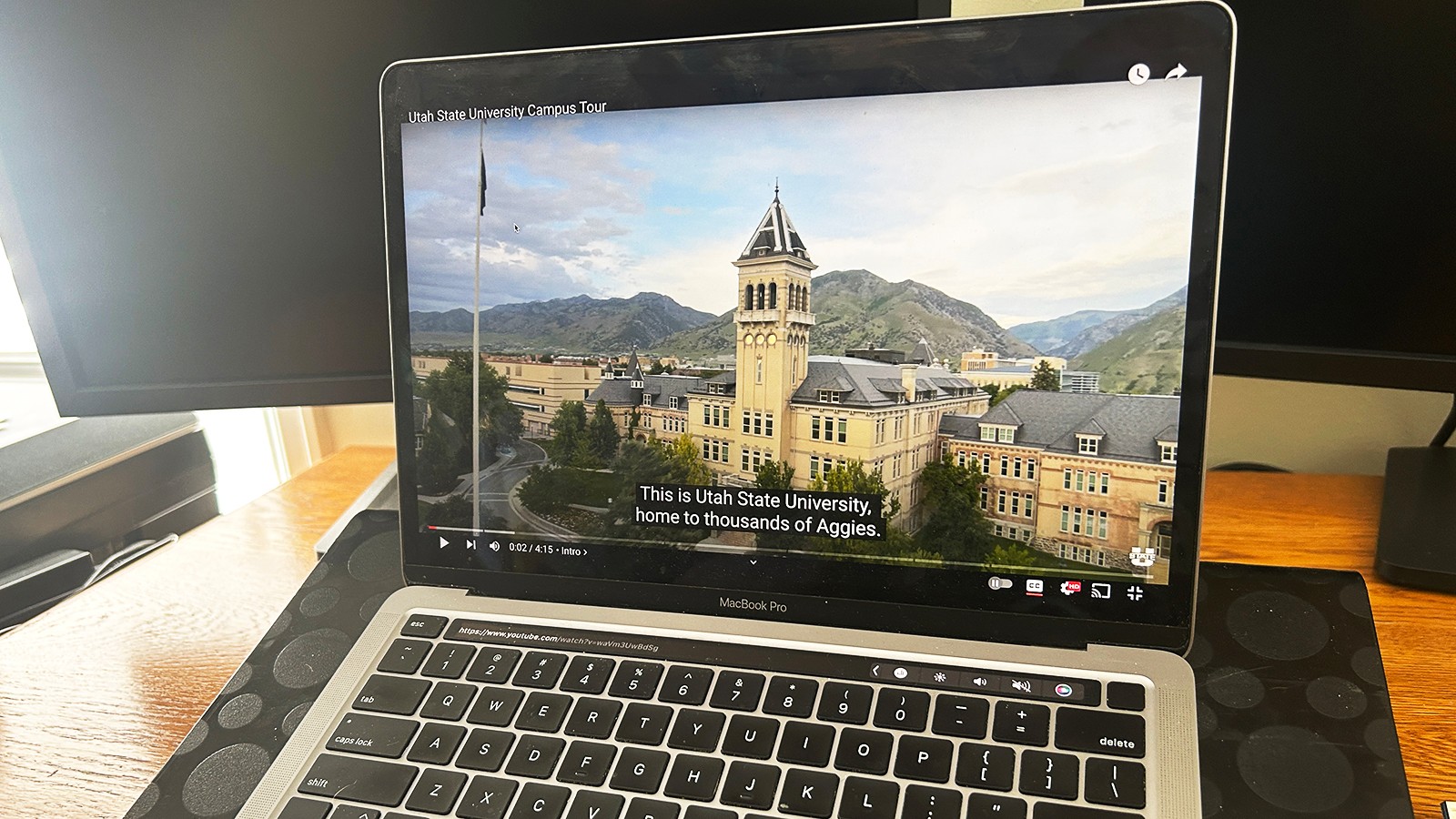Making Videos Accessible for All: USU's Push for Captioning
By Megan Spackman |
A screenshot of Utah State University's campus tour video. USU has been working to provide captions on all its videos. After setting a new standard of captioning all videos, the number of USU videos on YouTube with captions has risen from 22% to now 82% since December 2022. (Photo Credit: Marcus Jensen)
LOGAN, Utah — While it can often be an overlooked feature of many online videos and television shows, closed captioning– or subtitles– are an essential service that make these forms of media usable to viewers who are Deaf or hard of hearing. Utah State University has invested in captions to enrich its media to be more accessible for those who rely on captions and more inclusive for everyone.
In July 2022, USU leadership established a video and accessibility standard requiring captions on all videos moving forward. Video captions provide a text representation of audio content and provide an equitable viewing experience for all users. This feature allows USU to showcase its programs and people to a larger audience.
To support this new standard, Megan Spackman was hired as the caption program coordinator with the newly established Digital Accessibility Services team in December 2022. With Spackman in place, as well as this newly established standard, the number of USU videos on YouTube with captions rose from 22% in December 2022 to 82% by April 2023, with 8,899 videos having captions.
“It’s really incredible to see how far we’ve come,” Spackman said. “Finding the channels is an accomplishment in itself because when we began this project, we had no idea how many USU YouTube channels were even out there. Not only do we have an inventory of those now, but we’ve gone from having less than 25% of channels captioned to over 80% of them captioned… so it’s really a big jump and a big accomplishment that we’ve been able to raise that percentage so much.”
The team has also worked to address the misconception that captions are only for users who are deaf or hard of hearing. In fact, a 2016 study from Oregon State University and 3Play Media — the third party captioning company USU uses — found 71% of students without hearing difficulties use captions at least some of the time, and 75% of students used captions as a learning aid. Furthermore, 52% of the students who utilized captions said they helped improve their comprehension of the material.
USU students like Katie Bauer, a junior studying theatre, have found this to be true and use the captions as an added tool while studying.
“Captions help me better focus on what's being said in a video as well as better comprehend or understand the information that's being shared,” Bauer said.
Others, like graduate student Karen Fowles, have hearing loss and need the captions to participate.
“With single-sided deafness, it’s hard for me to understand the spoken word fast enough to process what’s being said,” Fowles said. “Closed captioning allows me to read the information presented, which I can follow and therefore have a better understanding of the material– and am able to participate more in my coursework.”
In addition to boosting student success, adding captions to video can make videos easier to find to increase viewership.
“The Huntsman School of Business started prioritizing captions on our videos about 7 years ago,” said Shara Gibbons, the director of enrollment and analytics for the Jon M. Huntsman School of Business. “At this point, all Huntsman School of Business videos posted on our YouTube channel have been captioned … [and] using 3-Play to caption new videos is just part of our promotional process. Captions also allow us to really expand the metadata associated with a video, expanding search result capacity greatly.”
The Digital Accessibility Services Team would love to see every video — even historical content made before July 2022 — captioned. More information on increasing accessibility can be found on the USU Captions page, including information on how captions benefit everyone.
To find out more, visit www.usu.edu/accessibility/captions.
WRITER
Megan Spackman
Caption Program Coordinator
Digital Accessibility Services
435-797-1050
megan.spackman@usu.edu
CONTACT
Megan Spackman
Caption Program Coordinator
Digital Accessibility Services
435-797-1050
megan.spackman@usu.edu
ADDITIONAL RESOURCES
TOPICS
Technology 157stories Disabilities 81stories Accessibility 19storiesComments and questions regarding this article may be directed to the contact person listed on this page.







